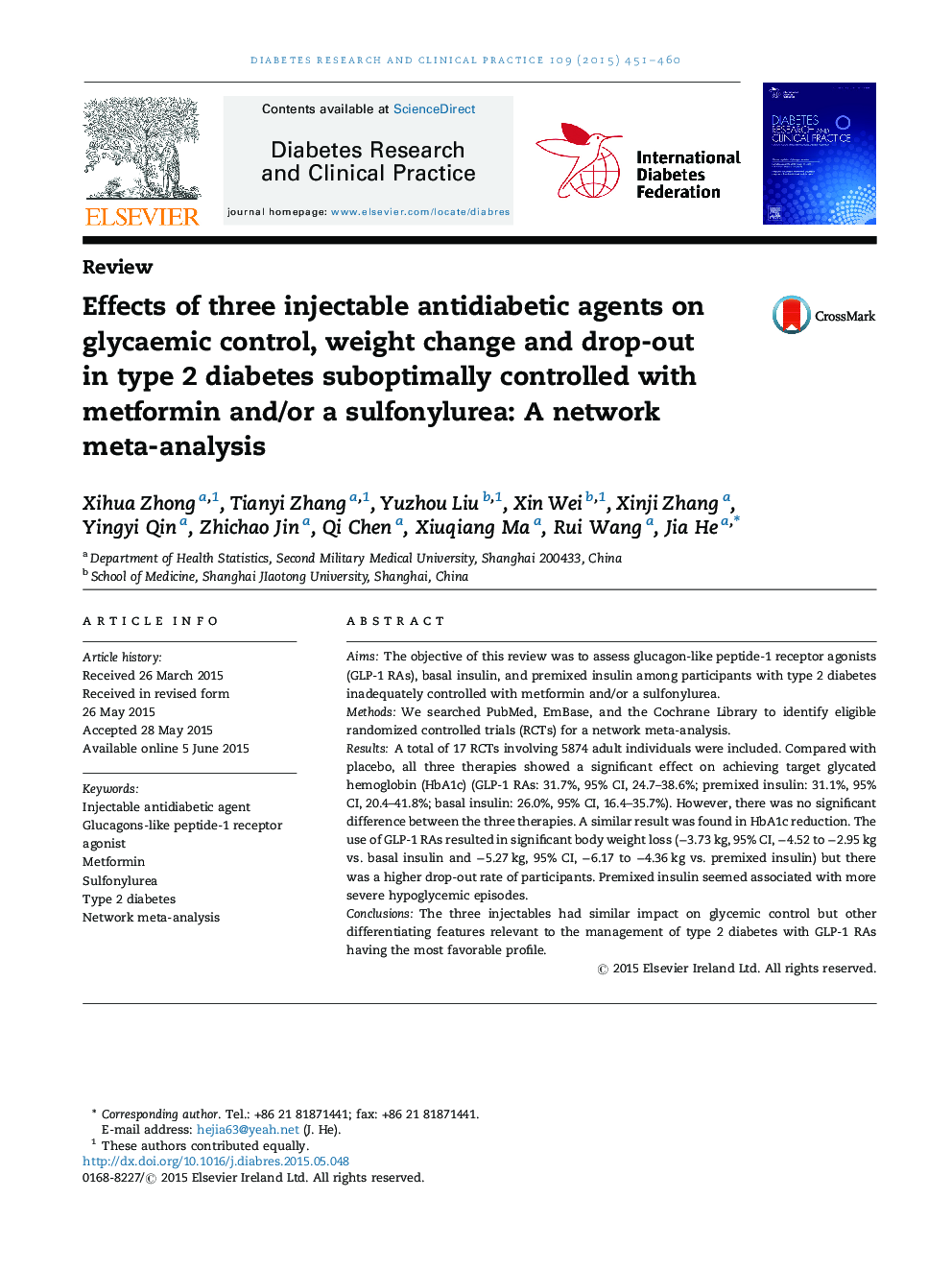| Article ID | Journal | Published Year | Pages | File Type |
|---|---|---|---|---|
| 2796220 | Diabetes Research and Clinical Practice | 2015 | 10 Pages |
•It seems first to analyze HbA1c target rate and drop-out in network meta-analysis.•GLP-1 showed a competitive short-term HbA1c control analogous to premix insulin.•Patients using GLP-1, like placebo group, dropped out more from study overall.•Effects were consistent in both direct and network meta-analyses.•This finding indicated GLP-1 seems promising as an injectable antidiabetic agent.
AimsThe objective of this review was to assess glucagon-like peptide-1 receptor agonists (GLP-1 RAs), basal insulin, and premixed insulin among participants with type 2 diabetes inadequately controlled with metformin and/or a sulfonylurea.MethodsWe searched PubMed, EmBase, and the Cochrane Library to identify eligible randomized controlled trials (RCTs) for a network meta-analysis.ResultsA total of 17 RCTs involving 5874 adult individuals were included. Compared with placebo, all three therapies showed a significant effect on achieving target glycated hemoglobin (HbA1c) (GLP-1 RAs: 31.7%, 95% CI, 24.7–38.6%; premixed insulin: 31.1%, 95% CI, 20.4–41.8%; basal insulin: 26.0%, 95% CI, 16.4–35.7%). However, there was no significant difference between the three therapies. A similar result was found in HbA1c reduction. The use of GLP-1 RAs resulted in significant body weight loss (−3.73 kg, 95% CI, −4.52 to −2.95 kg vs. basal insulin and −5.27 kg, 95% CI, −6.17 to −4.36 kg vs. premixed insulin) but there was a higher drop-out rate of participants. Premixed insulin seemed associated with more severe hypoglycemic episodes.ConclusionsThe three injectables had similar impact on glycemic control but other differentiating features relevant to the management of type 2 diabetes with GLP-1 RAs having the most favorable profile.
